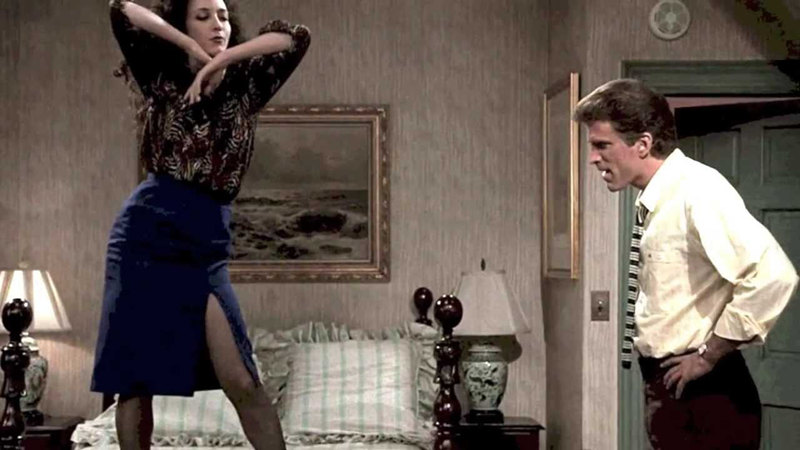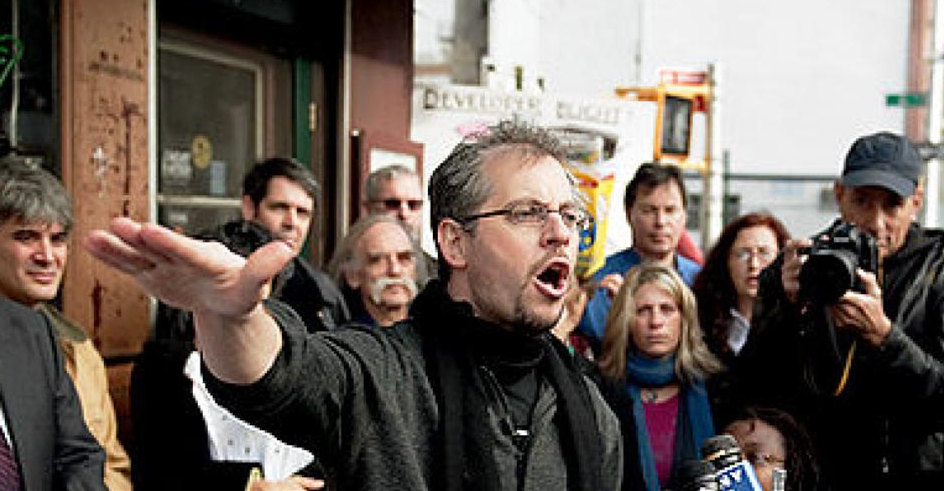Saturday mornings were always about TV cartoons, but during the ‘50s there were also a great many Westerns that young audiences could enjoy. Besides reruns of primetime horse operas like “Broken Arrow,” “Roy Rogers,” “Gene Autry,” and “The Lone Ranger,” there were Westerns that aired only briefly in prime time and were produced mostly for young Saturday morning viewers—shows like “Rin Tin Tin,” “Brave Eagle,” “Buffalo Bill, Jr.,” and the only female in the bunch: “Annie Oakley,” starring Gail Davis.
What these had in common was that each featured a young supporting character that kids could identify with, and in the case of “Annie Oakley” it was her headstrong younger brother Tagg (Jimmy Hawkins).
The concept was pure genius, because the show played to every boy’s fantasy: growing up in the Wild West with your own horse to ride, no parents to lay down rules, and a big sister who’s famous as a trick shot artist and trick horseback rider—a sister who talks a good disciplinary game but more often than not shrugs when you jump into the thick of things. Often she includes Tagg in her plans, and since Annie is a bit of a sleuth, little brother ends up playing Dr. Watson to her Holmes.
I recently watched episodes of “The Lone Ranger” and was surprised that they didn’t hold up nearly as well as I remembered. But seeing “Annie Oakley” again for the first time in decades, I’m struck by how well plotted the episodes are, and that helps them transcend their time period. Yes, they’re formulaic, and yes, the shows were aimed at children, but the plotting is as sophisticated as any Western to air on television in the ‘50s. I got hooked all over again. And the bonus? The acting is a believable blend of Disney Channel exaggeration in the main characters and a rougher realism in the bad guys and minor characters.
That realism is enhanced by Davis, who starred in a number of B Westerns and was “discovered” by Gene Autry, who featured her in more than 20 of his movies and 30 TV episodes. Like the legendary character she plays, Davis was a great horseback rider and trick shot who actually toured with Autry’s rodeo. Autry’s production company made this series, and you can tell she’s doing her own stunts, and ENJOYS doing them.
Davis, who wore the same buckskin-fringed outfit and braided pigtails in every episode, had charisma, and you could imagine more than a few boys in America having a crush on her. I know I did. And there’s still a certain something about her that plays well today. Annie is like a kick-ass girl next door.
Adding to the interest was a host of guest stars who are known for their Western roles. Denver Pyle and Slim Pickens appear, as do Fess Parker (aka “Davy Crockett” and “Daniel Boone”) and Lee Van Cleef (from the Sergio Leone Spaghetti Westerns).
For whatever reason, the sheriff of Diablo was usually out of town when there was trouble, leaving it up to Deputy Sheriff Lofty Craig (Brad Johnson) to maintain order, with, of course, help from Annie. But since she was a woman and the network couldn’t very well have her engaged in fistfights, Lofty handled all of the brawling, while gunplay was mostly Annie’s department. She’d do things like shoot the doorknob off a door so the bad guy couldn’t escape Lofty’s beating, or she’d ricochet a bullet off a spittoon so it would knock the gun out of someone’s hands. She was ALWAYS shooting guns out of people’s hands. The three main characters formed a kind of ad hoc family, because while there wasn’t much between Annie and Lofty, it was kind of understood that they were a couple . . . or at least that’s how Lofty saw it.
What’s telling is that the series wasn’t cancelled because of poor ratings, but because Jimmy Hawkins grew so quickly that he was no longer a viable Tagg. That all but underscores the fact that the most important character was “little brother,” though the star of the show and everyone’s heartthrob was Annie Oakley.
Another giveaway that the series was aimed at children is that there are moral lessons to be learned in just about every episode. But if you think children in the ‘50s were sheltered, you wouldn’t know it by “Annie Oakley.” Townspeople get killed, and Tagg is as accepting of that fact as his sister.
The real Annie Oakley who inspired this series lived from 1859-1926 and earned her living as a sharpshooter for Buffalo Bill and other traveling Wild West shows. Oakley once shot a cigarette from the mouth of Kaiser Wilhelm II, and TV’s Annie replicates that trick . . . and many others.
All 81 half-hour episodes are included here on 11 single-sided discs, for a total runtime of 36 hours.
Video:
“Annie Oakley” is presented in black-and-white in 1.33:1 aspect ratio. The picture varies per episode but VCI Entertainment has done a nice job with this set. I’ve seen transfers of single shows that were much worse. For the most part there’s an amount of grain that you can live with and some nice black levels that provide excellent contrasts. Considering all of the exterior shots and the hard riding and trick shooting, the effects and stunts are also pretty darned impressive-looking.
Audio:
The featured audio is an English Dolby Digital 2.0 Mono. Like other shows from this era, “Annie Oakley” has a soundtrack that’s as basic as that outfit Annie wears in every episode. There’s not much base but there’s also not as much distortion and damage as I would have expected. I think fans will be pleased with this package.
Extras:
Included is the pilot with Billy Gray (“Father Knows Best”) as Tagg, along with original commercials with Annie, an episode guide, and photo galleries featuring Annie in character, hospital and fan visits, publicity, comic covers, Davis’ private life, other appearances, and memorabilia. That alone would be a nice package of bonus features for an old TV series like this, but there are also two features: “Bulls-Eye! The Directors of Annie Oakley” (with film historian C. Courtney Joyner) and “Pig-tails and Six-shooters: The Making of TV’s Annie Oakley,” an all-new documentary featuring Joyner, Davis’ daughter Terrie, Western historian Rob Word, and an archival interview with Davis. It reminds you of what a mini-phenomenon the show was.
Bottom line:
“Annie Oakley” doesn’t get enough credit for being the first TV series to showcase a heroine—the only Western to feature a woman in the starring role. Yes, Dale Evans was part of Roy Rogers’ team, but he was the star by far. They may have sung “Happy Trails” together, but Rogers’ got the most airtime. Davis, meanwhile, is the point-of-view character and the star who is in most every scene. And she’s darned good at holding our attention. As Tagg would say, “Well I’ll be dog-bited!”


